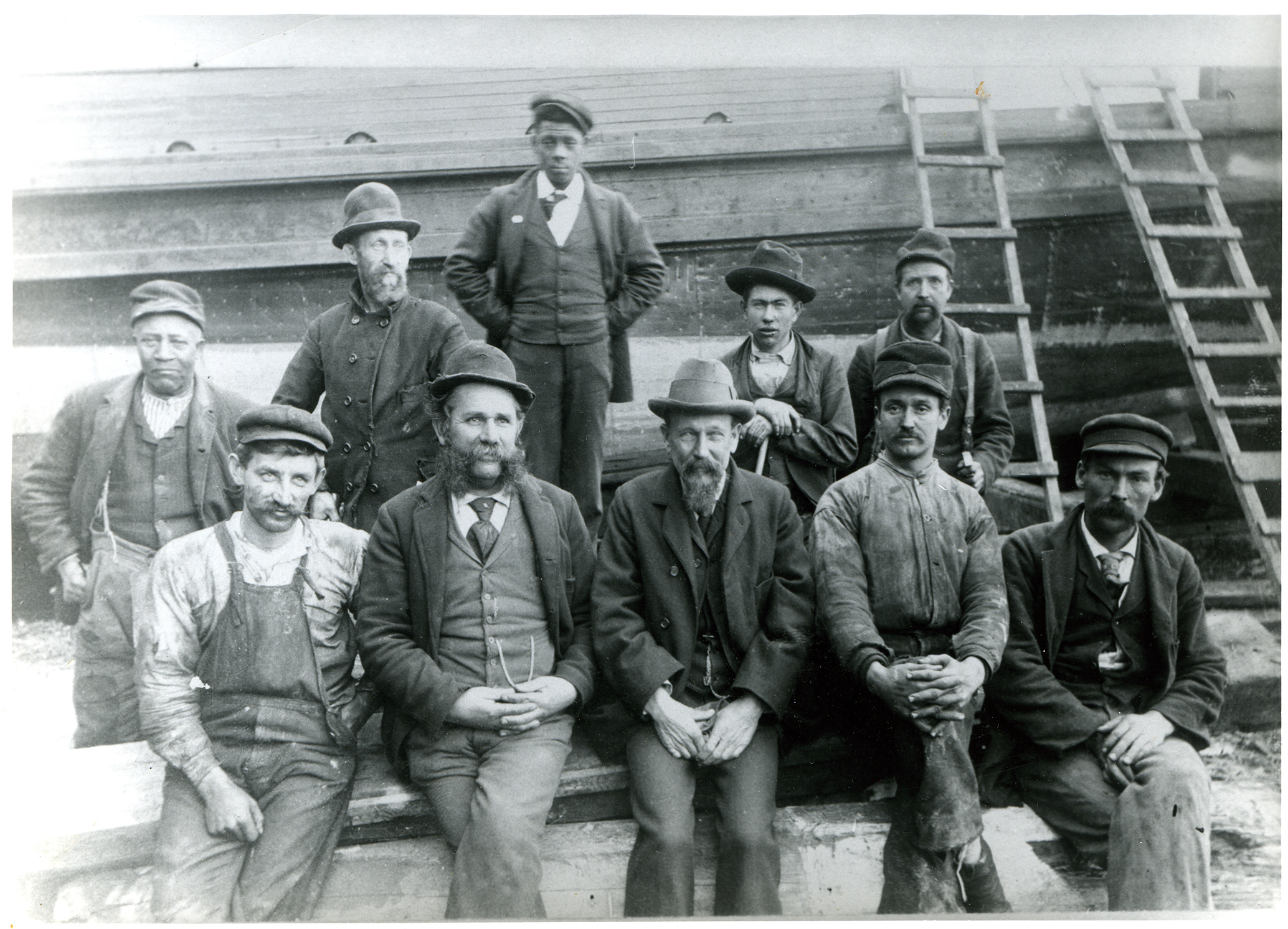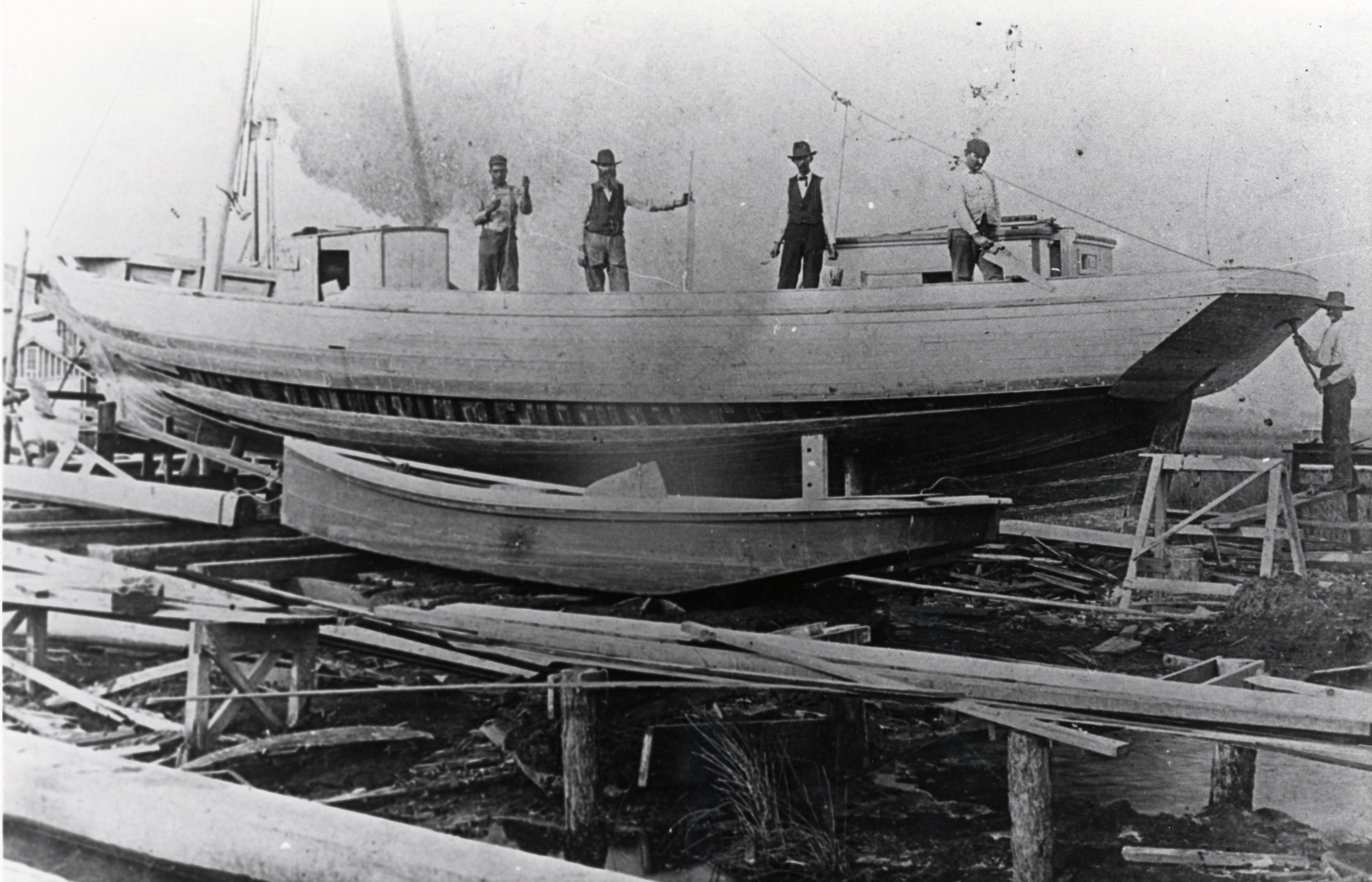
3 minute read
Rock of the Eye: Boatbuilding Traditions Around the Albemarle Sound
By Wanda Lassiter, Curator
Boatbuilders have been constructing vessels to ply the waterways of the Albemarle region for thousands of years. With many traditions passed along by generations before them, these crafters have shaped the Albemarle region into a diverse maritime haven by connecting communities together. Whether building boats for business or recreation, or used as a means to freedom, boatbuilders, along with their vessels and shipyards, have impacted the maritime history of this region.
DOUGH RUNABOUT, ca. 1915

Walter Otis Dough is captured in this photo working on a runabout in Manteo.
Courtesy Outer Banks History Center, Manteo
FEARING-HAYMAN BOAT WORKS, ca. 1902

Courtesy Museum of the Albemarle
Along these waterways, boats began their history. Indigenous Americans were the first boatbuilders. The wooden canoes that they constructed became a means of travel and transport. Regionally built of cypress, pine, or the light and resistant Atlantic white cedar, “juniper,” these vessels could range from 9 to 60 feet in length, depending on the required usage or conditions. Archaeological excavations at Lake Phelps in Washington and Tyrrell Counties have uncovered over 30 canoes dating from 500 BC to the 1400s AD. The significance of boatbuilding to the Indigenous Americans is exemplified through these finds, as they were called “expert watermen.”
Boatbuilders of the Albemarle region have constructed renowned vessels for many uses, both work and pleasure, many by intuition and feeling, the, “Rock of the Eye.” Builders pass along knowledge and technique from one generation to the next: each adding their own unique yet innovative and daring style, making boatbuilding imperative to our culture. Combining traditions with passion, commitment, and technology, boatbuilding has become a respected legacy in northeastern North Carolina.
A few still build their own boats in their backyards, working tirelessly to keep traditions alive. Many coming from long-standing fishing traditions, these boatbuilders take pride in their work as they ensure that the art of boatbuilding continues for future generations. To learn more about boatbuilding traditions please come and view our newest exhibit, Rock of the Eye: Boatbuilding Traditions Around the Albemarle Sound. The exhibit opens October 10 and features graphics and artifacts that exemplify boatbuilding traditions that tie generations and communities together, showcasing the Albemarle region’s strong, diverse maritime heritage.
SCHOONER UNDER CONSTRUCTION, ca. 1898

Employees of Creef Boatworks in Wanchese standing inside a schooner under construction.
Courtesy Outer Banks History Center, Manteo, NC
REGULATOR BUILD

Regulator Marine Inc. employees working on a 41-foot sportfishing boat.
Courtesy Regulator Marine Inc., Edenton, NC
ELIZABETH CITY SHIPYARD DURING WORLD WAR II, 1943

The shipyard produced 4 harbor tugs, 10 rescue craft, 30 subchasers, and 6 supply boats during World War II. Image shows laborers welding components of a harbor tug.
Courtesy Museum of the Albemarle
PITCHER WITH SHELL CASTLE ISLAND HARBOR IMAGES

This creamware pitcher, dating from 1795–1810, features Shell Castle Island, a lightering and pilot outpost with a lumberyard and ship supply storehouses. Located off Ocracoke Island, the stretch of land was owned by businessman John Gray Blount and ship’s pilot “Governor” John Wallace. Learn more about the importance of Shell Castle Island in our newest exhibit, Rock of the Eye: Boatbuilding Traditions Around the Albemarle Sound.
The pitcher is on loan from the NC Museum of History in Raleigh.

This creamware pitcher, dating from 1795–1810, features Shell Castle Island, a lightering and pilot outpost with a lumberyard and ship supply storehouses. Located off Ocracoke Island, the stretch of land was owned by businessman John Gray Blount and ship’s pilot “Governor” John Wallace. Learn more about the importance of Shell Castle Island in our newest exhibit, Rock of the Eye: Boatbuilding Traditions Around the Albemarle Sound.
The pitcher is on loan from the NC Museum of History in Raleigh.










